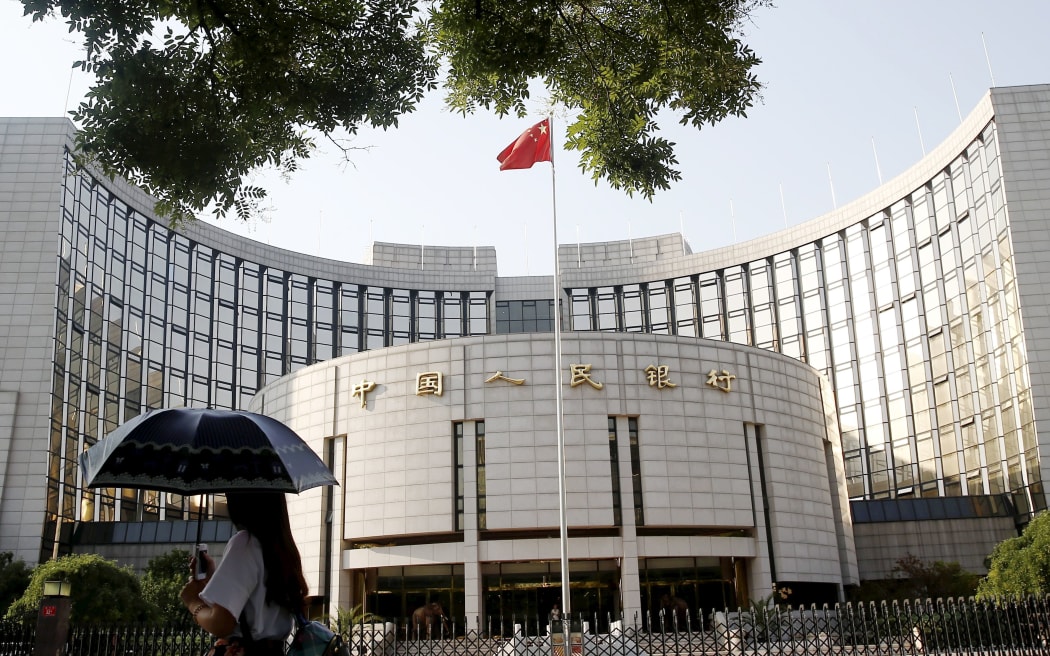China's second currency devaluation in two days has rattled markets across the region and put pressure on the New Zealand dollar.

The People's Bank of China devalued the currency for a second day in a row. Photo: AFP
The People's Bank of China yesterday devalued the currency against the US dollar by 1.6 percent on after cutting its value by 1.9 percent the day before.
The yuan fell another 1 percent yesterday, marking the biggest two-day lowering of its rate against the dollar in more than two decades.
The New Zealand dollar touched six-year lows, dropping nearly half a cent against its American counterpart to US64.7 cents at one stage yesterday before rebounding. At 5.30am today it was trading at US66.25 cents.
Foreign exchange adviser Derek Rankin told Morning Report the foreign exchange market had been volatile, with minute-by-minute changes, but the New Zealand dollar was expected to continue to fall overall.
"The danger is that other currencies are going to be affected by this as well, and that's why they call it currency wars, because everyone's trying to have a weak currency to try and help their exporters.
"And, of course, not every one can have a weak currency," he said.
China's central bank has revised the way it calculates its guidance rate to better reflect market forces. The new rate is meant to boost exports and help boost China's flagging economy, and further devaluations are considered likely.
Analysts say the devaluation is bad news for New Zealand exporters, particularly for commodities like dairy products which are priced in US dollars and are now more expensive to Chinese consumers.
The move sent fresh shockwaves through Asian stock markets, which fell more than 1 percent.
Concerns about China's stalling growth have also been compounded by fresh data on industrial production, retail sales and fixed-asset investment, all of which came in below market expectations.
Figures released at the weekend showed Chinese exports fell more than 8 percent in July, adding to concerns the world's second largest economy is heading for a slowdown.
Rate more market-based
Yesterday, China's central bank fixed the "official midpoint" for the yuan down 1.6 percent to 6.3306 against the dollar. The midpoint is a guiding rate, from which trade can rise or fall 2 percent during the day.
Until Tuesday, that rate had been determined solely by the People's Bank of China (PBOC) itself.
But the rate will now be based on overnight global market developments and how the currency finished the previous trading day.
The devaluation could mean Chinese exporters, in particular textile and car companies, may become more competitive, as Chinese consumer goods will be cheaper for foreign retailers. But exporters to China are likely will find it harder to sell their goods.
- RNZ / BBC

